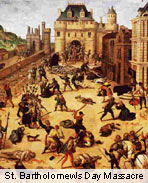Clan Sempill People
 Robert Sempill (the elder) (c. 1530–1595)
Robert Sempill (the elder) (c. 1530–1595)
Scottish ballad-writer, was in all probability a cadet of illegitimate birth of the noble house of Sempill or Semple.
Very little is known of his life. He appears to have spent some time in Paris. He was probably a soldier, and must have held some office at the Scottish court, as his name appears in the Lord Treasurer’s books in February 1567-1568, and his writings show him to have had an intimate knowledge of court affairs. He was a bitter opponent of Queen Mary and of the Catholic Church. Sempill was present at the siege of Leith (1559-1560), was in Paris in 1572, but was driven away by the massacre of St Bartholomew. He was probably present at the siege of Edinburgh Castle serving with the army of James Douglas, earl of Morton.
Robert Sempill, the younger (1595 – 1663)
Scottish poet, son of Robert Sempill, was educated at the University of Glasgow, having matriculated in March 1613.
During the Civil War he fought for the Stuarts, and seems to have suffered heavy pecuniary losses under the Commonwealth. He died between 1660 and 1669. He married Mary, daughter of Sir Thomas Lyon of Auldbar. His son, Francis Sempill, was also a writer.
His reputation is based on the ballad, “The Life and Death of Habbie Simpson, Piper of Kilbarchan”, written c. 1640. It is an interesting picture of the times; and it gave fresh vogue to the popular six-lined stanza which was much used later by Allan Ramsay, Robert Fergusson and Robert Burns (see particularly, Burns’s Poor Mailie’s Elegy). Two broadside copies were printed before 1700, and it appeared in James Watson’s Collection of Poems (1706-1710). Sempill is supposed to be the author also of an epitaph on Sawney Briggs, nephew to Habbie Simpson, written in the same stanza.





